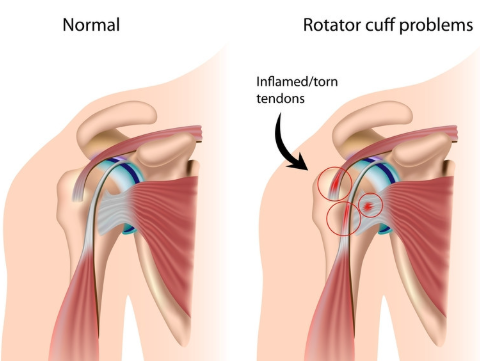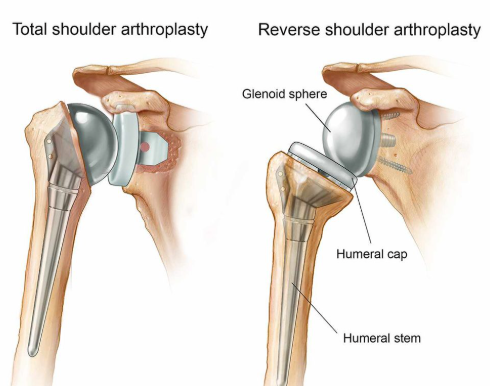A rotator cuff injury involves damage to the group of four muscles and tendons that stabilize the shoulder and enable movement. It can result from wear and tear, repetitive overhead activity, or trauma. Types of Rotator Cuff Injuries: Tendinitis – Inflammation of the rotator cuff tendons, often due to overuse. Bursitis – Inflammation of the bursa (fluid-filled sac) that cushions the shoulder. Partial Tear – The tendon is damaged but not completely severed. Full-Thickness Tear – The tendon is fully detached from the bone. Symptoms: Shoulder pain, especially at night Weakness when lifting or rotating the arm Limited range of motion A clicking or popping sensation Treatment Options: Non-Surgical: Rest, physical therapy, anti-inflammatory medications, corticosteroid injections. Surgical: Rotator cuff repair (arthroscopic or open), tendon transfer, or shoulder replacement (for severe cases). I can generate a medical illustration of a rotator cuff injury to show the anatomy and types of tears. Would you like one?

Shoulder Joint Replacement (Shoulder Arthroplasty) Shoulder joint replacement is a surgical procedure used to replace damaged parts of the shoulder with artificial components, typically due to severe arthritis, fractures, or irreparable rotator cuff tears. Types of Shoulder Replacement: Total Shoulder Replacement (Anatomic) The ball (humeral head) and socket (glenoid) are replaced with artificial parts. Best for patients with intact rotator cuff tendons. Reverse Shoulder Replacement The normal ball-and-socket structure is reversed, placing the ball on the shoulder blade and the socket on the upper arm. Used for patients with severe rotator cuff damage or arthritis. Partial Shoulder Replacement (Hemiarthroplasty) Only the ball (humeral head) is replaced, leaving the natural socket. Used when the socket is still healthy. Resurfacing Shoulder Arthroplasty A less invasive option where only part of the joint surface is replaced. Ideal for younger patients with minimal bone loss. Indications for Surgery: Severe osteoarthritis or rheumatoid arthritis Complex fractures Irreparable rotator cuff tears Avascular necrosis (bone death due to lack of blood supply)

